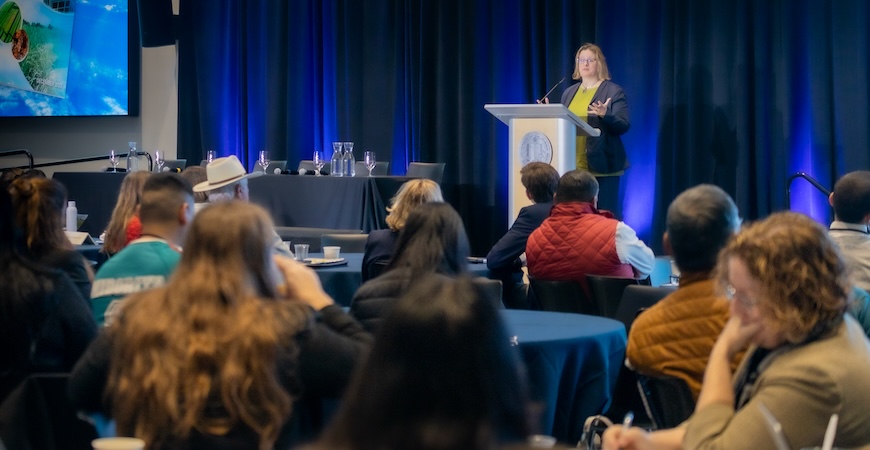
Discussions around climate change often center around the bad news - the planet is warming, weather is getting more extreme, resources are increasingly scarce.
But there also is cause for hope. There are options to mitigate climate change, and some of them are already happening.
This was the message behind "Roads to Removal," a symposium at UC Merced based on the report by the same name. The report was commissioned by the Department of Energy and produced by Lawrence Livermore National Laboratory (LLNL) in conjunction with scientists from more than a dozen institutions across the nation, including UC Merced.
Roughly 175 people from academia, science, agriculture and business attended the symposium, the first of several planned to highlight what can be done in specific areas of the United States to reduce global warming.
The federal government has set a goal to reach net-zero emissions by decarbonizing the economy, removing carbon dioxide from the atmosphere and storing at least a billion tonnes - a metric ton - a year by 2050. "Roads to Removal" is aimed at determining how much carbon dioxide can be removed and at what cost. The UC Merced event focused on soils, cropland and management; direct air capture; geologic storage; and biomass carbon removal and storage.
"It's not every day we can be part of conversations like this," said James Lawler, founder of Climate Now, which co-sponsored the event. "In person and online, you have some of the smartest people in the world. … The reason we are here is to solve a problem - climate change."
The symposium began with a public lecture Feb. 29 that offered an overview of the report's findings, particularly as they relate to the western United States and more specifically to the Central Valley. On March 1, several panel discussions were held to dive more deeply into the data and into measures being undertaken now and planned for the future. These panels featured researchers from UC Merced and elsewhere, along with industry leaders and elected officials.
"We can use technology that we know works today to remove carbon, and in the process create hundreds of thousands of jobs," said Jennifer Pett-Ridge, a senior staff scientist at LLNL and adjunct professor at UC Merced who is the lead author of the report. "We need to weigh how these new approaches to reducing carbon are going to affect our lives."
Researchers estimate the 1 billion tonnes of removal would cost $139 billion per year, or $139 per ton per year.
"It's a pretty good deal," said Pett-Ridge. "The costs of climate change dwarf this number."
Karen Ross, secretary of the California Department of Food and Agriculture, offered the symposium's keynote address. She said while there are immense challenges stemming from climate change, there are opportunities as well.
Some of those opportunities include generating technology and manufacturing equipment that is more climate-friendly, and making innovations in the way crops are grown to improve their impacts on the environment.
Researchers estimate the measures they describe taking could create as many as 440,000 jobs - "good, long-term jobs," Ross said.
The UC Merced event served as the kickoff for the researchers, who plan several stakeholder conversations and symposiums across the country, including in Oklahoma, Indiana, North Carolina, Pennsylvania and Wyoming.
For more information or to download the report, visit the Roads2Removal website .



